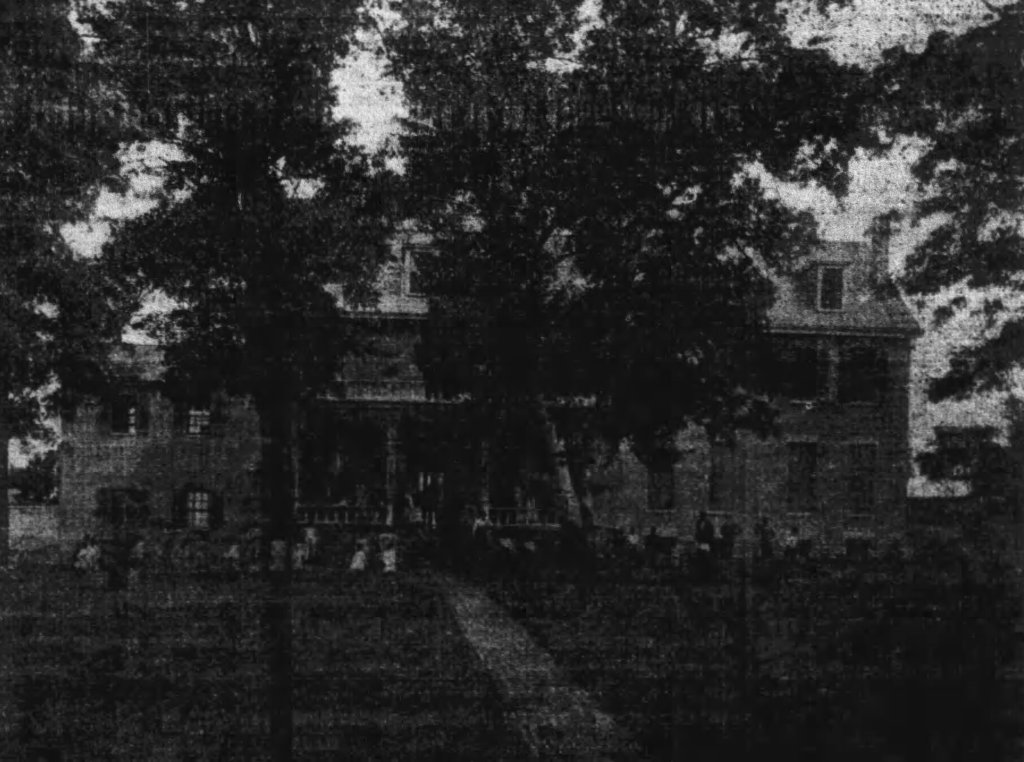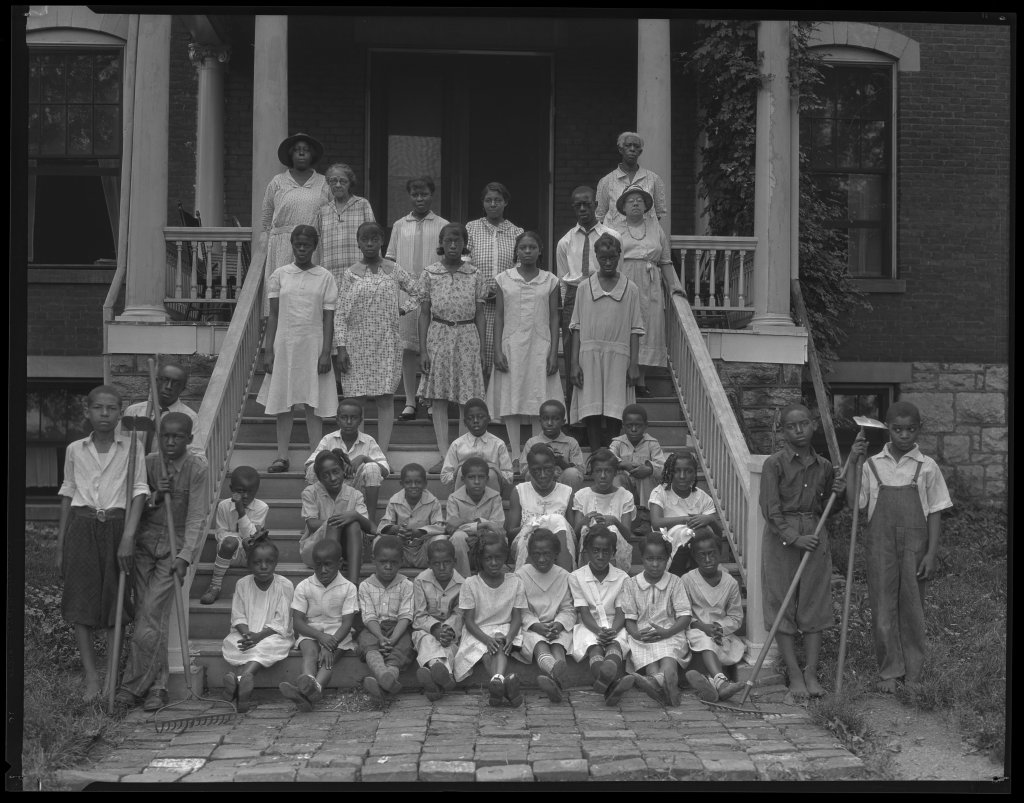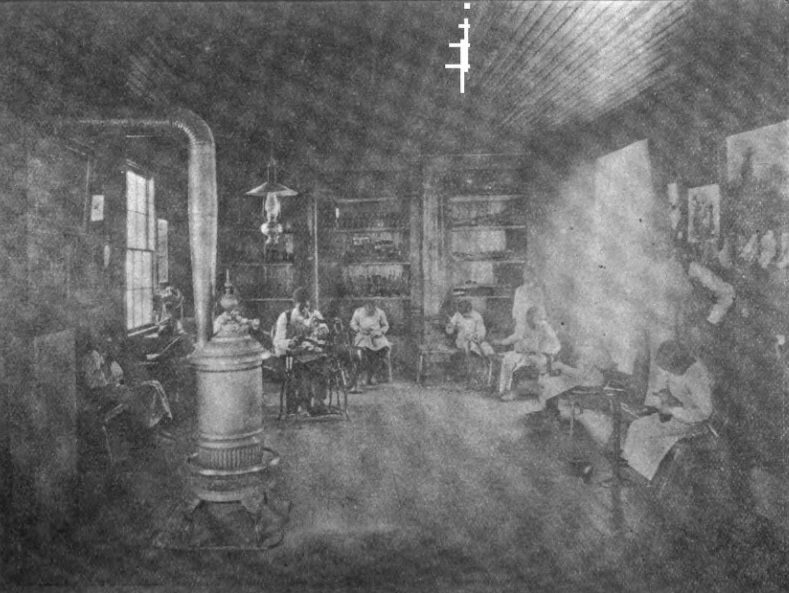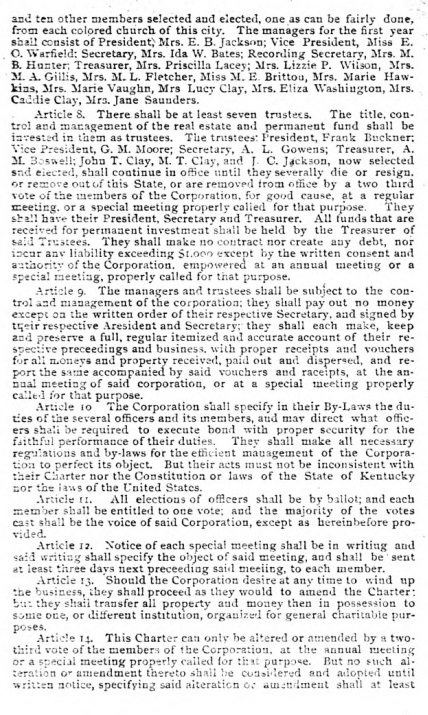
Be sure to scroll down to access a database of names of “inmates” admitted between 1894-1901. This list will be updated as time and resources permit.

In Lexington, Kentucky, It was a small group of dedicated African American women, headed by Mrs. E. Belle Mitchell Jackson, who realized the need for a facility for the care of orphaned and infirm African American children and elderly women. The women envisioned a home owned “purely under Negro auspices and management” so that the diligent care for these children, under the watchful eyes and hands of trained and caring professionals could be cared for and trained for usefulness in life. Additionally, the group wanted room for a small number of aged and helpless women who might otherwise be homeless and destitute. This dream began in motion around 1890 when a formal charter was obtained to open such a facility. At that time, not a single dollar was available but their hopes and dreams would empower them to find a way and find the funding. Around September of 1892, a Home was purchased in the suburbs of Georgetown Pike and consisted of a two and one-half acre lot with a brick dwelling containing a total of twelve rooms. It was noted that “We did not have a dollar to start with but through the mercy of our Heavenly Father and the kind generosity of friends we have succeeded admirable.”

The Home officially opened on November 9, 1894, and soon began caring for a total of fourteen children and five aged and infirm women. Even then, the Home would struggle to meet financial needs but they never gave up the dream. Their focus was on providing the children with a “three-fold seduction,” primarily around moral, industrial, and literary training. This would allow the children to be useful men and women in their communities when they reached the age of accountability and responsibility. The boys would receive training for various trades while the girls would receive extensive domestic lessons. The fundamentals of the Home had the goal of teaching and showing these children, “that honesty and integrity constitute the true nobility in man; that to toil for an honest living is no disgrace, but a recommendation; that no man is to be the less respected, the less entitled to the enjoyment of social privileges, because he drives the plow, shoves the plane, smites the anvil, or makes the marble startup beneath the chisel of genius. We want our girls to understand to be more skilled in dressmaking, millinery, laundry, cooking, and housekeeping generally. Then we want to give them normal and literary training.”
In the first year of operation, the Colored Orphan Industrial Home received a number of donations from individuals, businesses, and churches from across the country for a total of $1,643.50.
| Kentucky | Ohio | New York | Michigan | Penn. | Illinois | Misc. | |
| No. of Donors | 6 | 20 | 93 | 33 | 1 | 16 | 4 |
| Amount | $52.00 | $146.00 | $738.50 | $375.00 | $100.00 | $197.00 | $35.00 |
The second annual report of the Colored Orphan Industrial Home reveals that, through the help of Capt. R. H. Fitzhugh, the Home was able to open two industrial departments; those being tailoring and dressmaking. There was only a single report of a death happening at the Home and that was an elderly female, over eighty years of age. The Matron for the Home was Mrs. Charlotte Pogue. The third annual report came in 1896 and reported that the industrial departments were running quite successfully. The tailoring department was headed by Mr. J. F. Burton and, by all accounts, was well-fitted for this position. The dressmaking department was headed by Mrs. Bettie Merchant who was noted as being a very patient, preserving woman and the children loved her and “vied each other in carrying out her instructions.” Approximately ten girls assisted the Matron in cooking, cleaning, and doing laundry and they seemed to enjoy helping her take care of the younger children. At that time, all children who were old enough to attend the district school did so daily. The schoolhouse was about fifty years from the Home. The teacher, Miss Hathaway, was regarded as an earnest Christian woman and also a member of the Board. Later that year, the Home reported being completely free from debt. This was, in part, thanks to the Fiscal Court, which made a number of “liberal donations.” They were essentially running at maximum capacity and, while they were incredibly thankful for the donations and assistance they had, they were already looking toward the future and the possibility of opening a brand new building when time provided. Yet again, there was only one reported death, an elderly female, aged “three score and ten years” who died in October of 1896.
Thanks to the donation of an anonymous person from one of the Northern states, the Colored Orphan Industrial Home was able to receive significant renovations in 1897 with the addition of an entirely new wing that included more dormitory space and more “industrial” room for specialized shops and departments. By 1899 the Home had expanded departments to include a kitchen garden, kindergarten exercises, ordinary needlework, practical domestic training, gardening and shoe-making. The school of sewing headed by Mrs. E. T. Henderson. included the kitchen garden and kindergarten departments along with housing the needle workshop. Within the school of sewing, nearly all clothing and other needlework items were produced by the children. The shoemaker’s shop opened July 1, 1899, and was headed by Mr. George Hart. In addition to doing all of the shoe-related work for the Home, the instruction was given to boys and girls to begin the process of the shoe-making trade. The gardening department was headed by the janitor where both boys and girls took part in growing nearly the entire supply of vegetables for the Home. At some points, a surplus had been raised and sold on the market. A system had been developed by the Home in which selected children were “farmed out” of the Home and took in certain others selected from the community. It was the goal of the Board that this incorporation and association in the local public was that it would afford certain children the benefits of associating with, and tutelage under, the best men and most skilled artisans within the community.
By the turn of the new century, the home was flourishing both from within and outside. By 1909 the total acreage neared twenty and would be the largest in the Home’s history. In the winter of 1912, a devastating fire took the lives of a young boy and two firemen and destroyed the Home. Though the Home had been in operation for more than a decade by the time of the fire, no other facility was providing care for African American children. The loss was palpable but hope was not given up. Just as they did back in the 1890s, the women, again, did their rounds to raise money for a new Home. Multiple campaigns ensued. A temporary shelter was used for the children and staff and soon after, work began on rebuilding the Home. In 1912 construction began on a brand new two-story building. To the delight of many, the new facility opened just a year later in August of 1913. The facility would continue to grow and provide for the community’s African American children and infirm elderly women until it ceased operation in 1988. The building is still standing and is currently used as the Robert H. Williams Cultural Center.
Image Gallery
Images from University of Kentucky Archives, Special Collections and Colored Orphan Industrial Home Annual Reports
Roll of Inmates
*Age When Admitted
†Provides
‡ Sent to Asylum
All ages are listed in years unless otherwise notated
Rules and Regulations
Articles of Incorporation

Contributed by Shawn Logan | contact@kyhi.org
⁘ Works Cited ⁘
- Johnson, W. D, and Daniel Murray Collection. Biographical Sketches of Prominent Negro Men and Women of Kentucky. Lexington, Ky, 1897.
- The Daily Leader (Lexington, Kentucky), 19 January 1895, p. 4.
- The Daily Leader (Lexington, Kentucky), 2 July 1899, p. 9.
- 96PA101, Collection on Lafayette Studios, University of Kentucky Archives.
- Lexington (Ky.). Colored Orphan Industrial Home. Annual report. Lexington, Ky.: Standard Print.
Important note:
If you would like to use any information on this website (including text, bios, photos and any other information) we encourage you to contact us. We do not own all of the materials on this website/blog. Many of these materials are courtesy of other sources and the original copyright holders retain all applicable rights under the law. Please remember that information contained on this site, authored/owned by KHI, is provided under a Creative Commons Attribution-NonCommercial-NoDerivatives 4.0 International License.
Photographs, text, illustrations and all other media not authored by KHI belong to their respective authors/owners/copyright holders and are used here for educational purposes only under Title 17 U.S. Code § 107.













